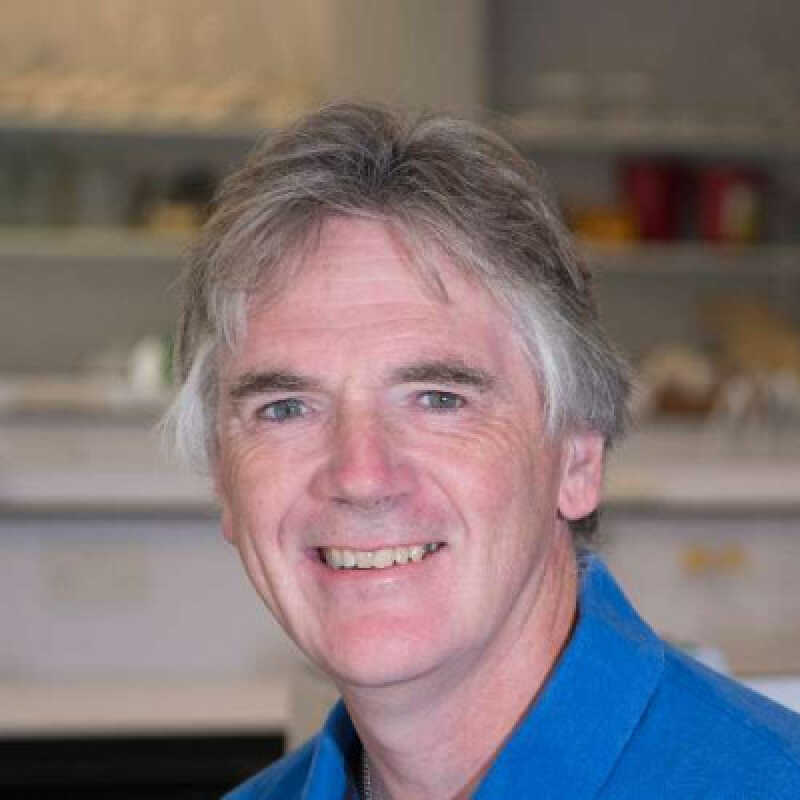- University of Kent
- Biosciences at Kent
- People
- Professor Martin Warren
Professor Martin Warren


Professor Martin Warren joined the School of Biosciences in 2005. He is a member of the Industrial Biotechnology and Synthetic Biology Group and the Centre for Molecular Processing. Martin was born in Northern Ireland, brought up in County Down, and went to Portora Royal School, Enniskillen. He subsequently went to Southampton University where he read Biochemistry as an undergraduate (1981-1984). He stayed on in the Biochemistry Department to do a PhD with Professor Peter Shoolingin-Jordan, which initiated his interest in the genetics and biochemistry of tetrapyrrole biosynthesis.
After completing his PhD studies, he moved in 1989 to Texas A & M University, where he worked as a research associated with Professor Ian Scott FRS on vitamin B12 biosynthesis. In 1991 he took up a lecturing position in the School of Biological Sciences at Queen Mary, University of London, where he stayed until 1995 when he moved to a Senior Lecturer position at the Institute of Ophthalmology, University College London. He was promoted to Reader of Biochemistry in 1998 but then moved back to the School of Biological Sciences at Queen Mary in 1999 to take up a Personal Chair. In 2005 he moved to the University of Kent, where he is Professor of Biochemistry. In 2007 he was awarded a BBSRC Professorial Fellowship to work on the bioengineering of complex metabolic pathways.
He has published numerous articles on tetrapyrrole biosynthesis and the biochemistry underlying inherited retinopathies, as well as co-authoring a popular book on the link between tetrapyrrole biosynthesis and the madness of George III.
Warren’s research envelops areas of chemistry, biology and history. His interests are firmly embedded in the biosynthesis and biology of the pigments of life, encompassing molecules such as heme, chlorophyll, vitamin B12, siroheme, coenzyme F430 and heme d1.
With Dr Evelyne Deery he was one of the first to use synthetic biology as a means to probe biosynthetic pathways through the reconstruction of the whole cobalamin (vitamin B12) pathway in E. coli, an organism that does not possess the ability to make this molecule de novo. More recently he has elucidated a novel alternative heme biosynthesis pathway that is present in both archaea and sulphate reducing bacteria, where siroheme is hijacked as a substrate – a rare example of where one prosthetic group is cannibalised for the synthesis of another.
His interest in vitamin B12 chemistry led to a study of how cobalamin is used for propanediol utilisation (pdu) in some bacteria, where remarkably the metabolic process is sequestered within a proteinaceous organelle called a bacterial micrcompartment, one of the largest protein-based complexes found in nature. Here, again, the entire pdu operon was cloned into E. coli and shown to orchestrate the construction of functional recombinant pdu microcompartments. Subsequently, empty organelles have been engineered through the targeting of new proteins and processes to these bodies.
His interest in heme metabolism has also contributed to a new subject of scientific historiography. Here, he has studied George III, America’s last king, whose madness has been attributed to attacks of porphyria, an inborn error of heme metabolism. Through research in the Royal Archives in Windsor Castle and DNA analysis of some of the King’s descendants, coupled with a forensic analysis of the King’s hair, he has shown that it is likely that the much-maligned monarch suffered with variegate porphyria, worsened by the administration of antimony-based medication that was contaminated with arsenic.
Loading publications...
Showing of total publications in the Kent Academic Repository. View all publications